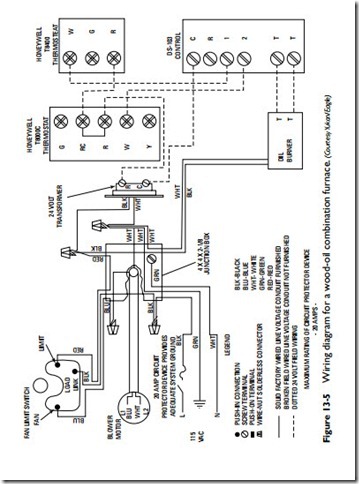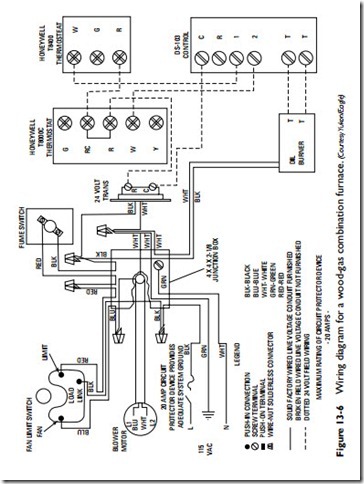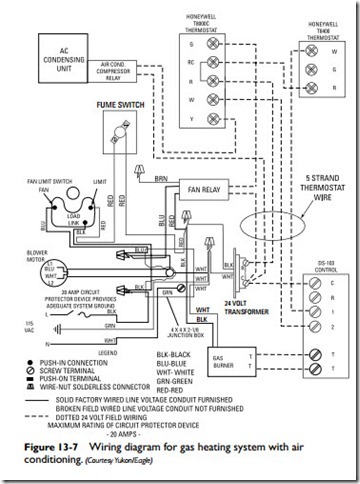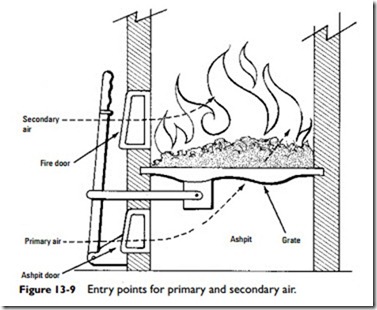Ventilation and Combustion Air
The total draft requirement of a coal-fired furnace is greater than those of furnaces that burn gas or oil because the chimney draft must overcome the resistance of the fuel bed.
Both a primary and secondary air supply are necessary for the combustion of solid fuels. The primary air passes through the fuel bed, generally on an upward path from the ashpit. The secondary air is usually admitted through slots in the furnace fire
door and passes over the fire to complete the combustion process (Figure 13-9).
On residential furnaces, the secondary air slots in the fire door should be kept closed. There is usually enough air leakage to
admit a suitable amount of secondary air without having to open the fire door. An excessive amount of secondary air (particularly after the fire has taken hold) will actually reduce the efficiency of the furnace.
The draft will determine the rate at which the fuel is burned. The draft in furnaces using coal or coke will depend upon the following factors:
1. Type of fuel (anthracite or bituminous, coke, etc.)
2. Size of fuel
3. Fuel-bed thickness
4. Ash and clinker accumulation
5. Flue resistance to the flow of gas
6. Soot accumulation in flue
7. Grate area
The rate at which the fuel is burned will depend upon the heat- ing load demand of the specific location. The burning rate can be varied by regulating the draft. One of the most effective methods of doing this is by placing a damper in the flue outlet. This method proportionally reduces both primary and secondary air.
An ashpit damper is required for low combustion rates. A cold- air check damper is necessary when there is excessive chimney draft.
Venting
Provisions must be made for venting the products of combustion to the outside in order to avoid contamination of the air in the living or working spaces of the structure. Masonry chimneys and low- heat Type A prefabricated chimneys are the most common methods of venting coal-fired furnaces.
Flue Pipe
Coal furnaces require flue passages—larger than those used—for gas and oil furnaces. This is due to the far greater volume of smoke, soot, and other products of combustion associated with burning solid fuels.
The flue pipe extending vertically up through the chimney should have a constant cross-sectional area throughout its length (Figure 13-10). The chimney flue (i.e., the passage between the furnace and the chimney) must have a cross-sectional area no less than that of the furnace flue collar. A diameter 1 inch larger is recommended. Consult the local building code for flue sizing recommendations if more than one furnace or appliance is to be connected to a single flue.
The chimney thimble, which connects the smoke pipe to the chimney, should be made of heat resistant fire clay. Its inside diameter should be roughly equal to the outside diameter of the smoke pipe to ensure an airtight fit at the chimney. Do not allow the chimney thimble to extend beyond the chimney flue lining.




